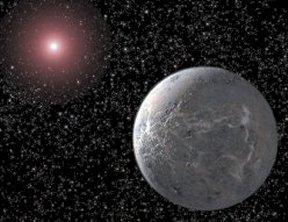Taking advantage of some gravitational sleight of hand, astronomers have found indirect evidence of the smallest planet known to exist beyond our solar system.

Just five times as heavy as Earth, the planet circles a red dwarf, a low-mass star. The planet orbits three times farther from its star than Earth does from the sun. Taking into account the planet’s size and orbit, researchers estimate that the planet’s surface temperature is –220°C, similar to that of Pluto.
Red dwarfs are the most common stars in the Milky Way. The new discovery therefore suggests that planets with masses such as Earth’s may not be rare, says Kailash Sahu of the Space Telescope Science Institute in Baltimore. He and his colleagues report their finding in the Jan. 26 Nature.
To detect the planet, which lies about 20,000 light-years from earth astronomers relied on one of the stranger properties of gravity: It acts as a magnifying lens. When one star briefly passes in front of another, the foreground star amplifies the light of the background star. If the foreground star happens to have a planetary companion, researchers will see brightening over a longer period of time.
The team found that the brightening lasted about 12 hours longer than it would have if the foreground star had had no partner. The astronomers deduced that the passing red dwarf has a small planet orbiting it.
Researchers will have to wait for another chance alignment between stars to learn more about the planet.







